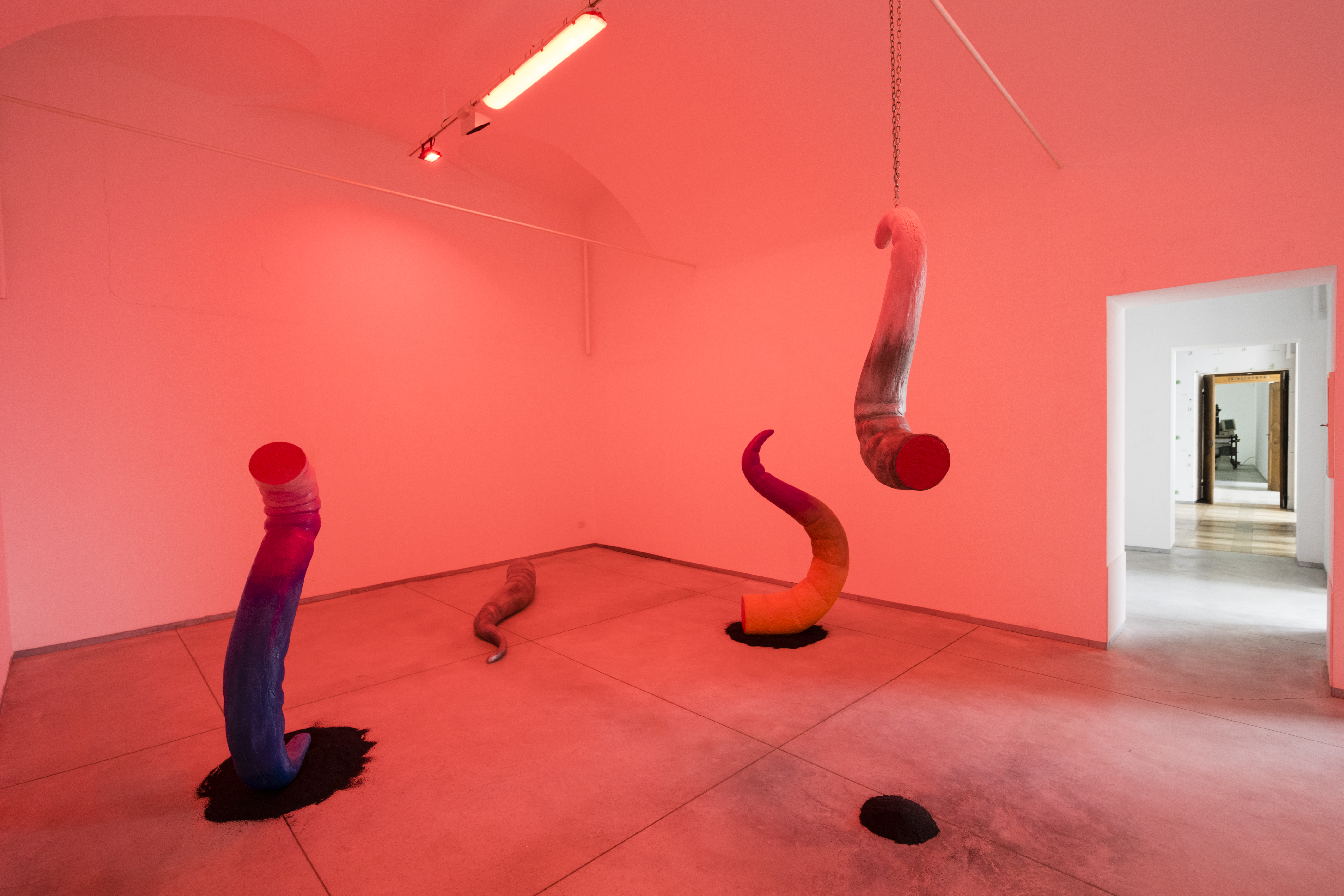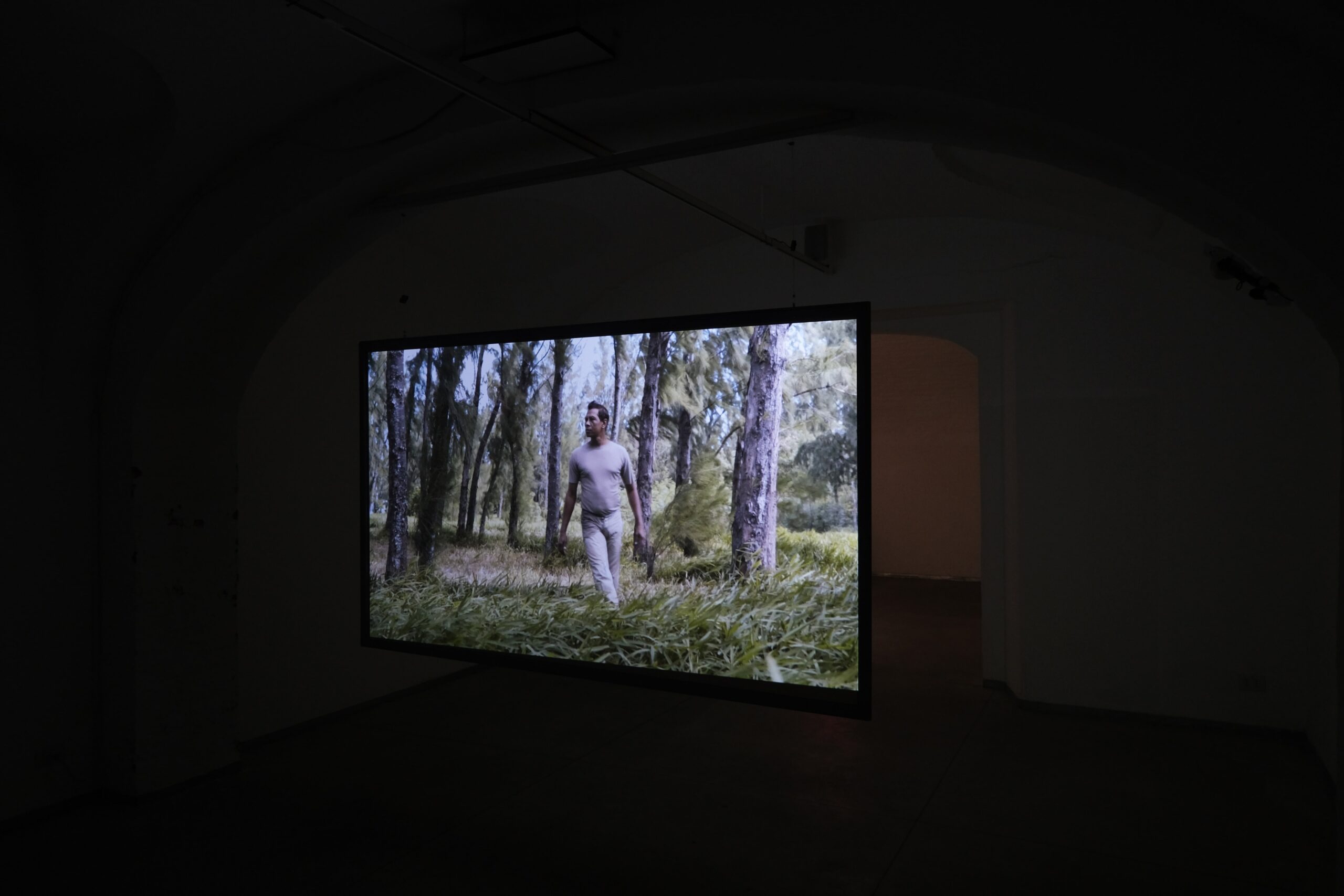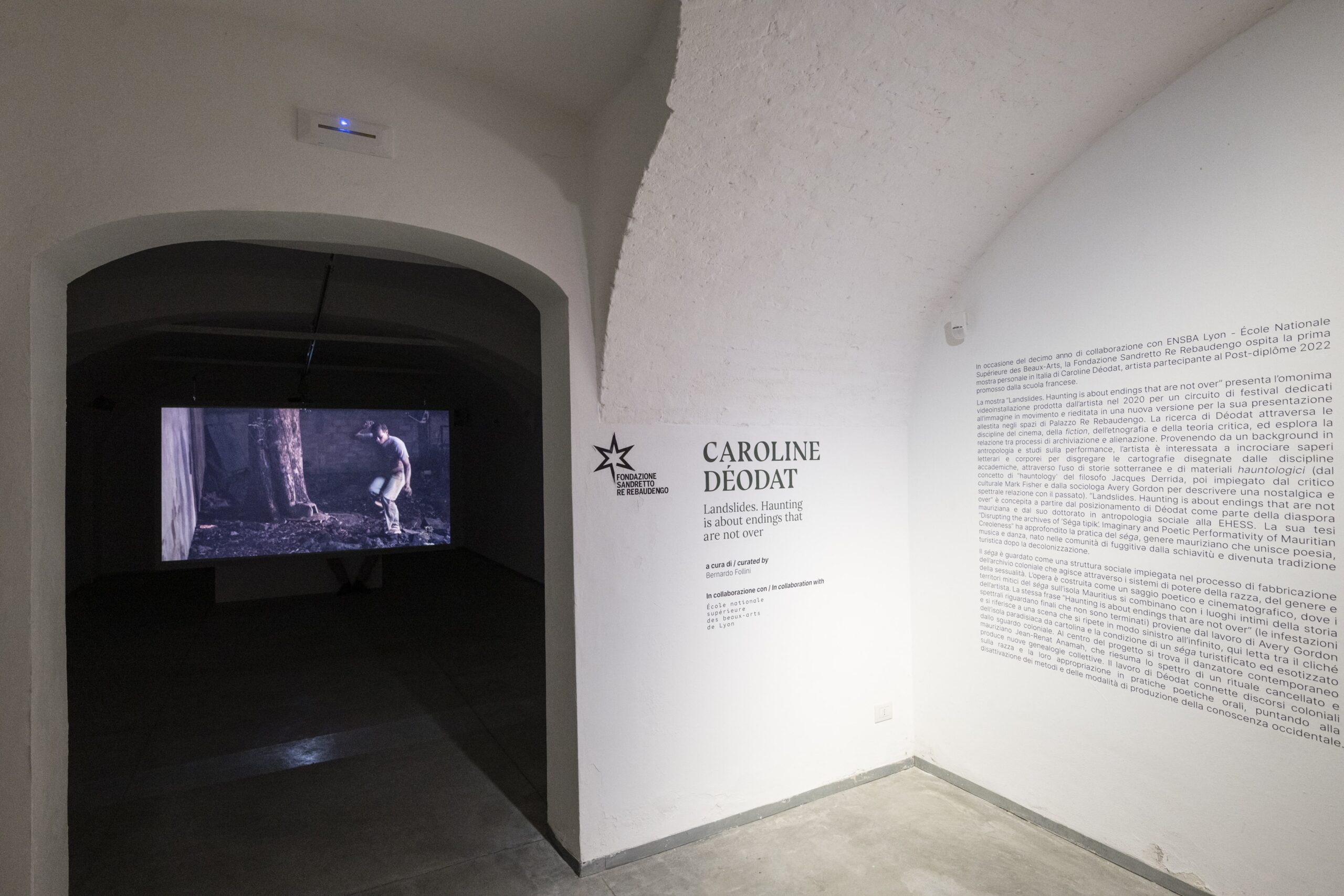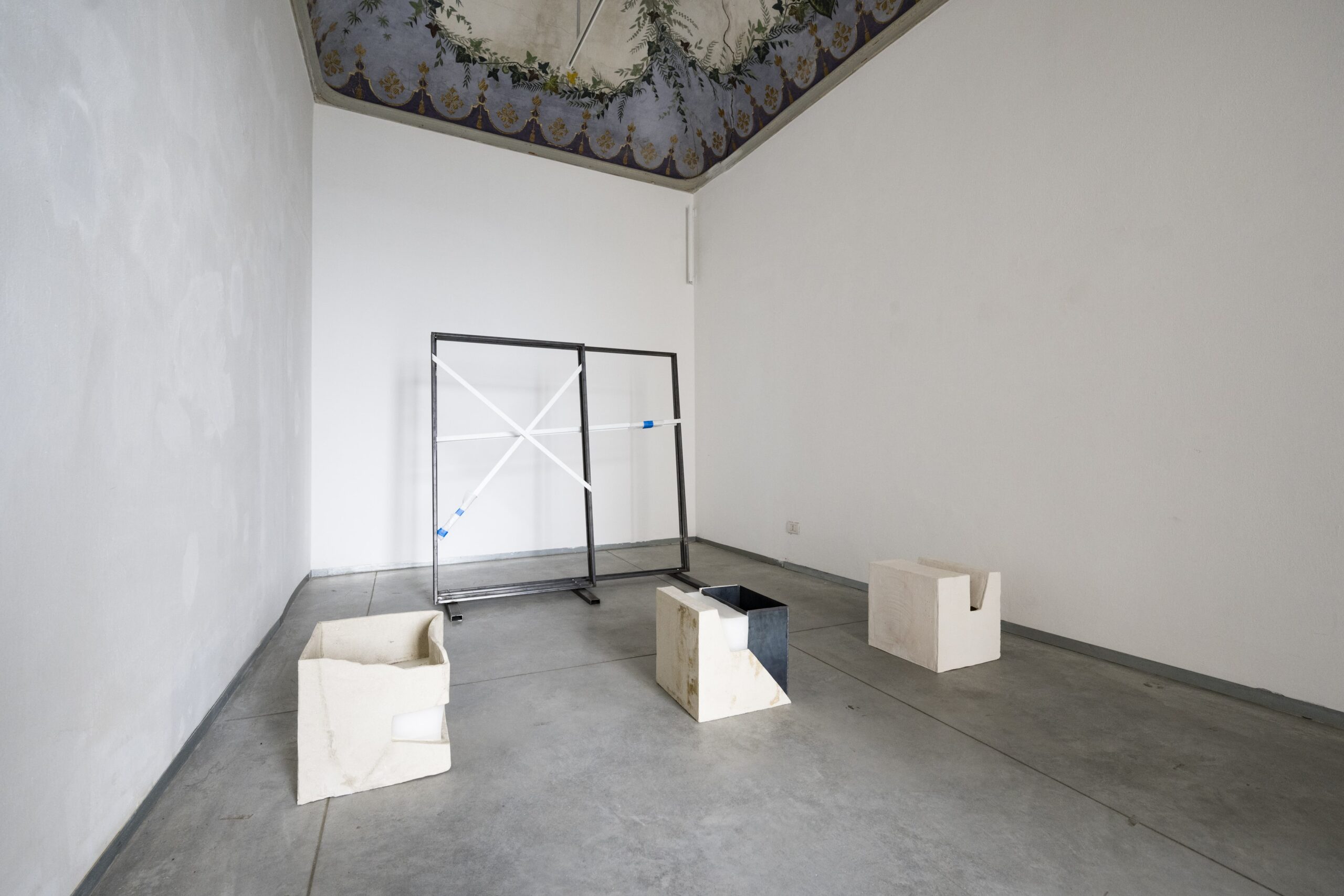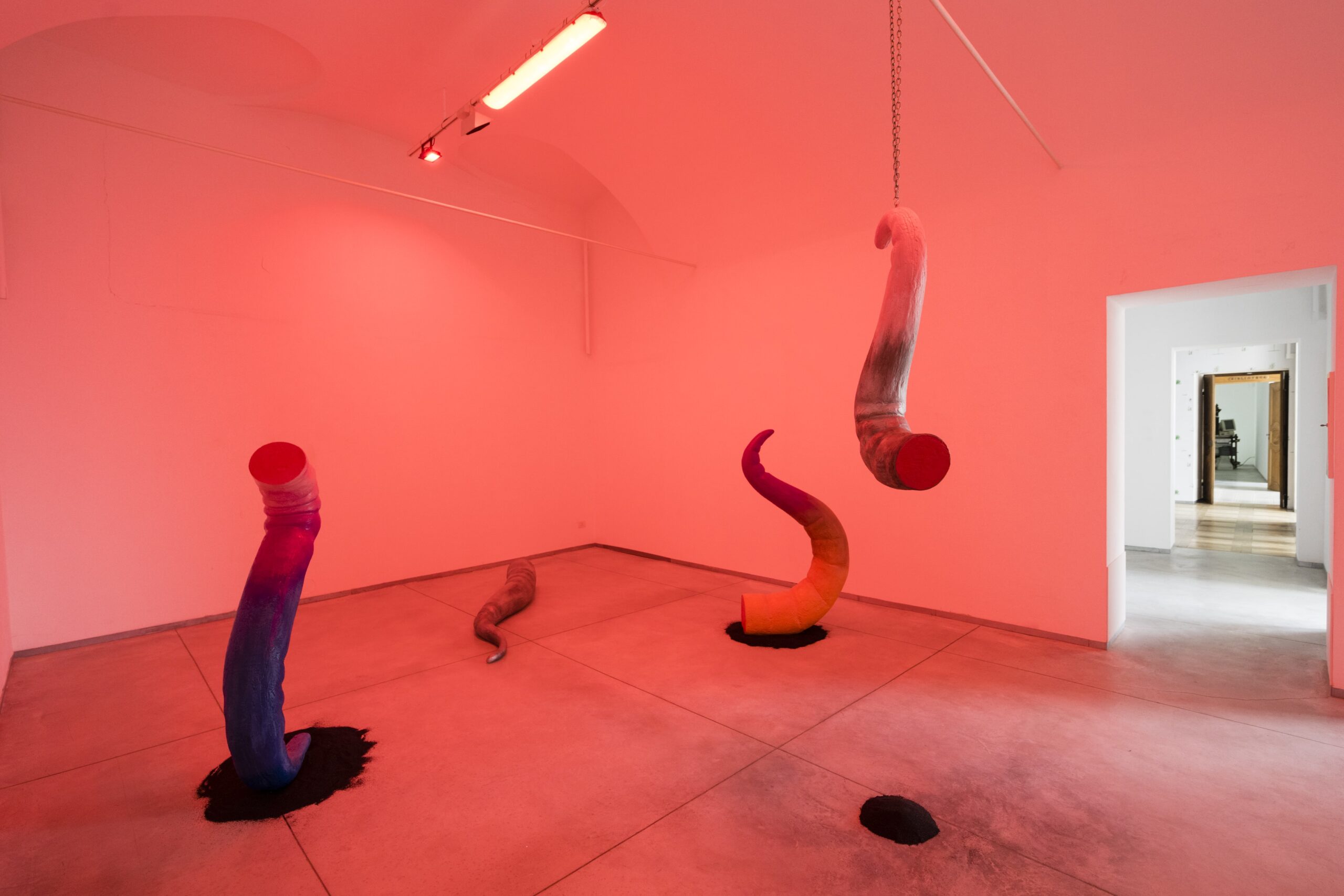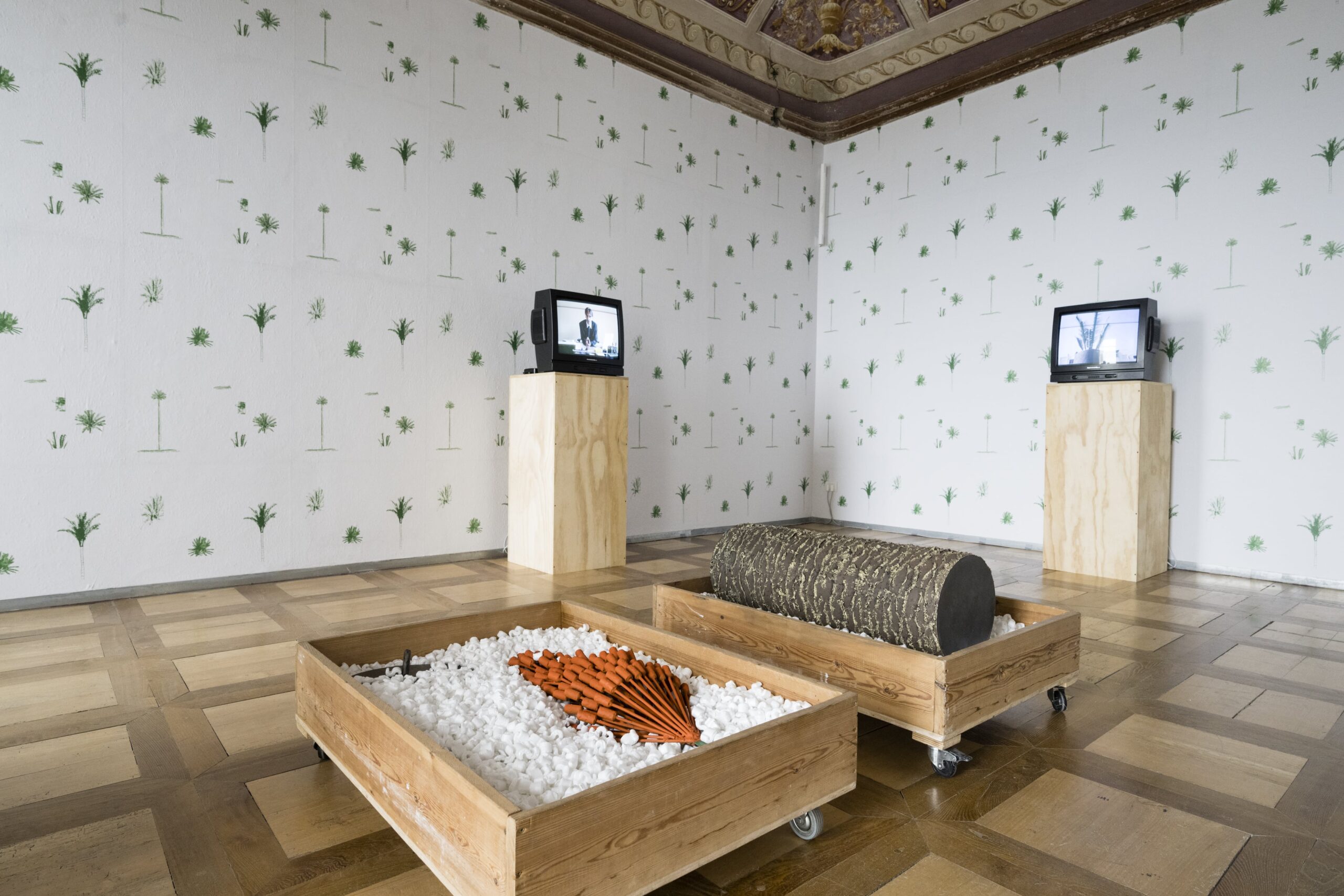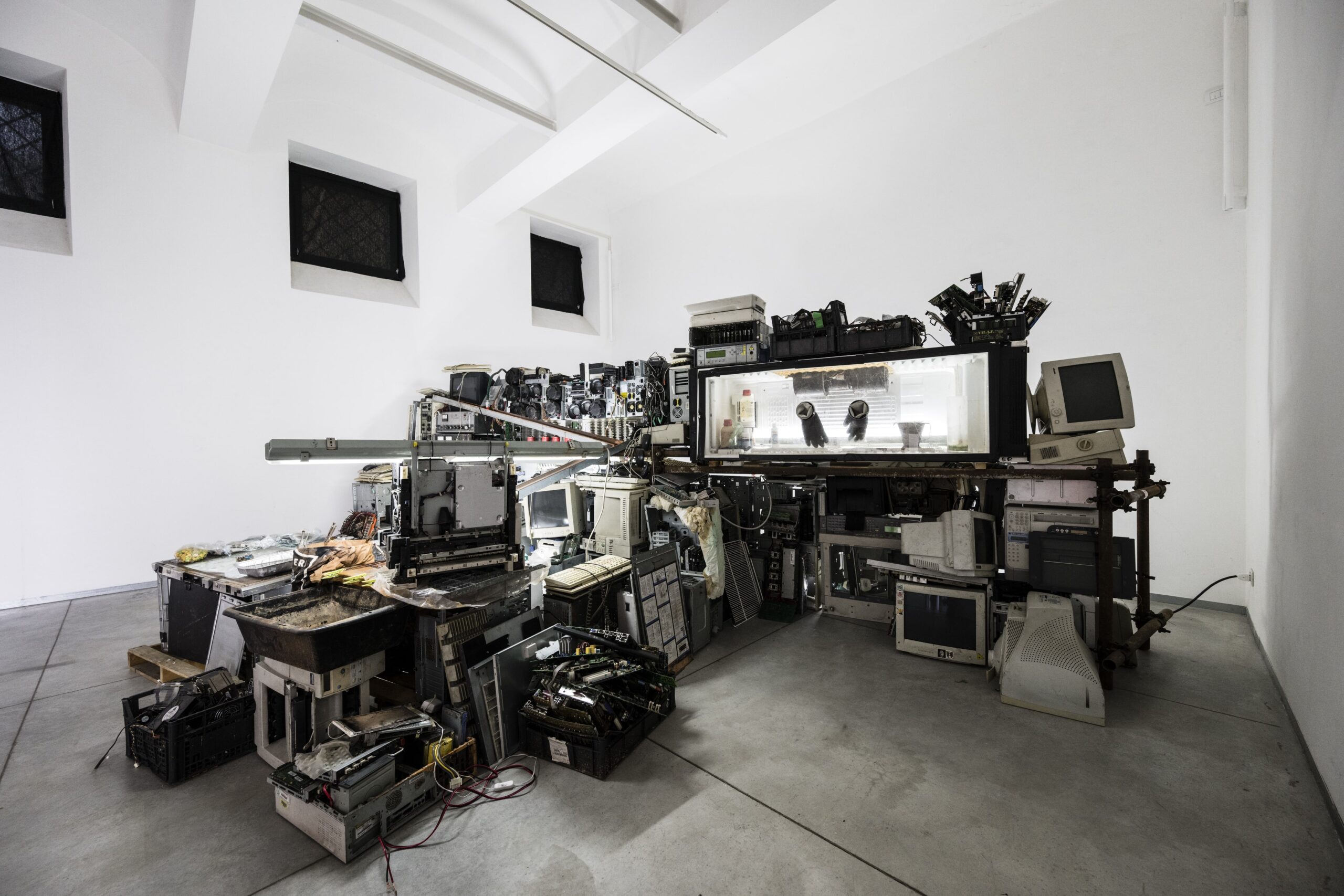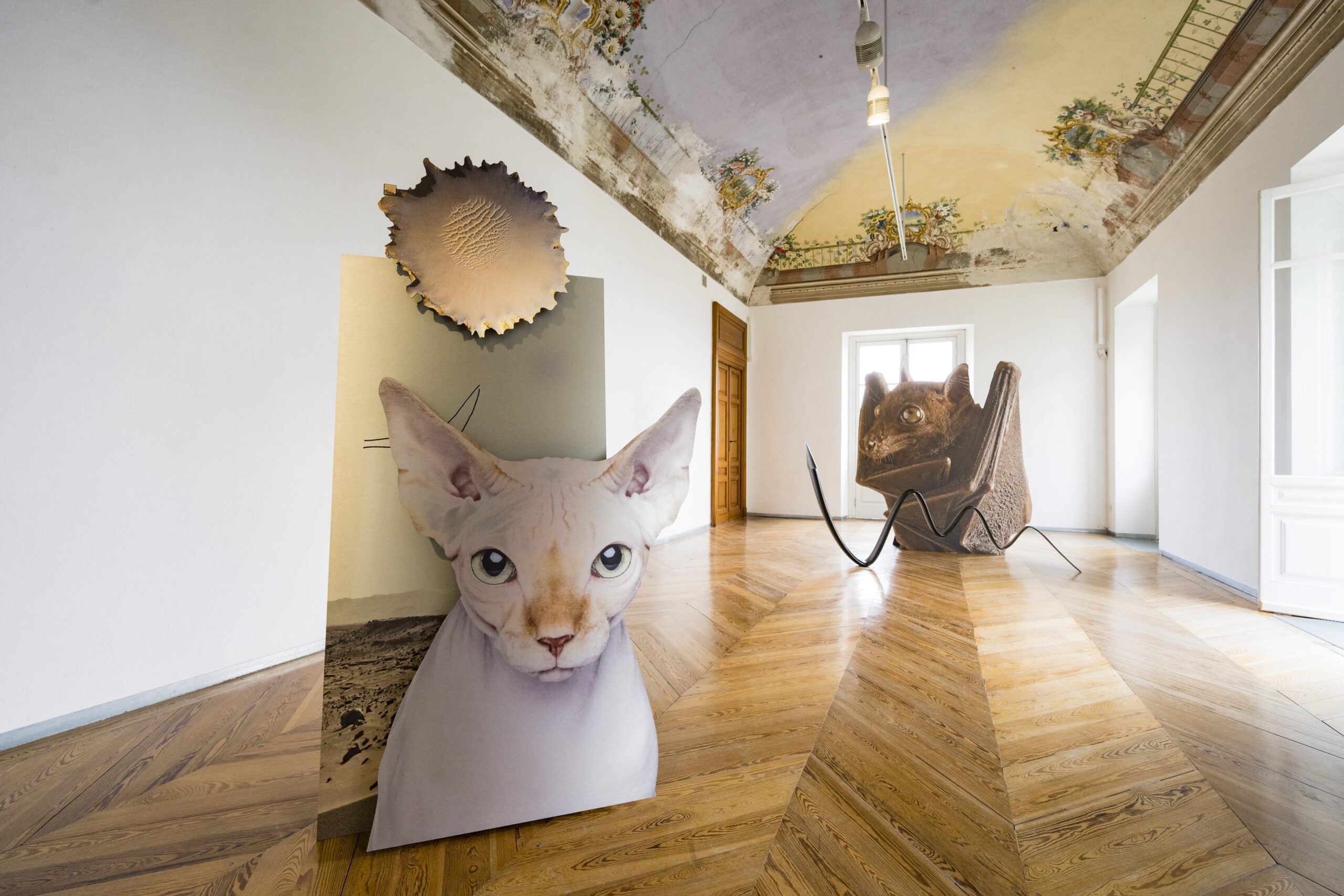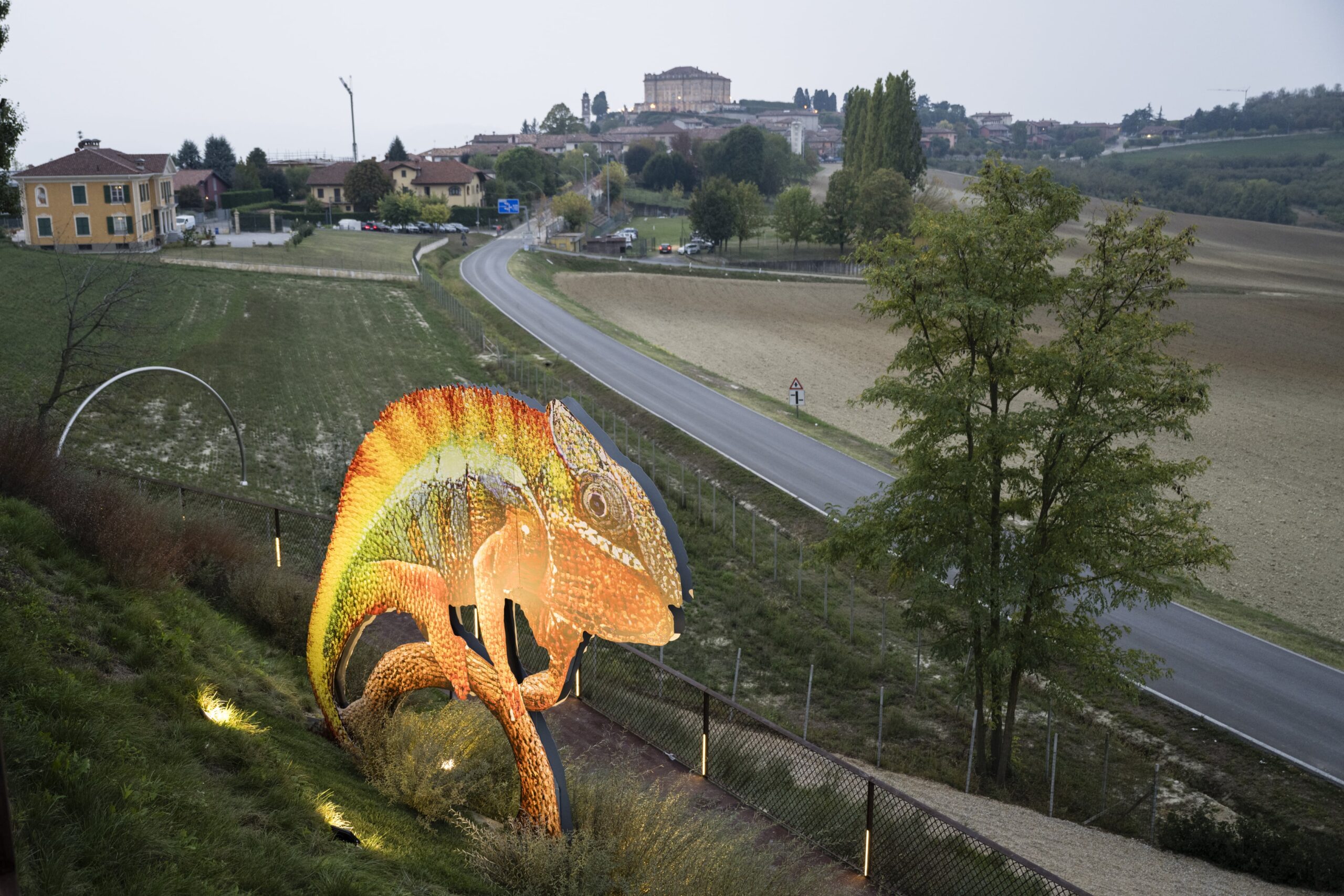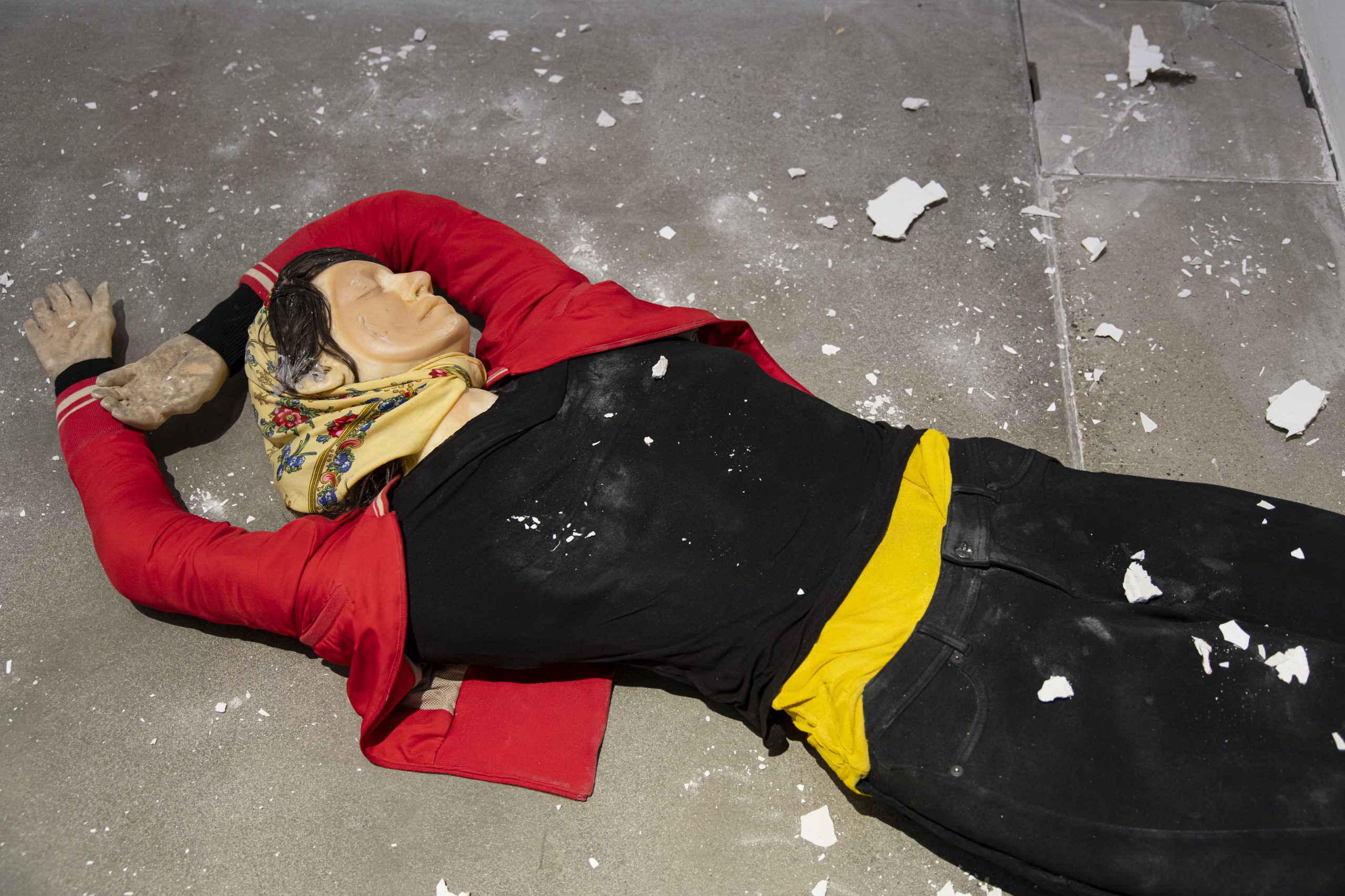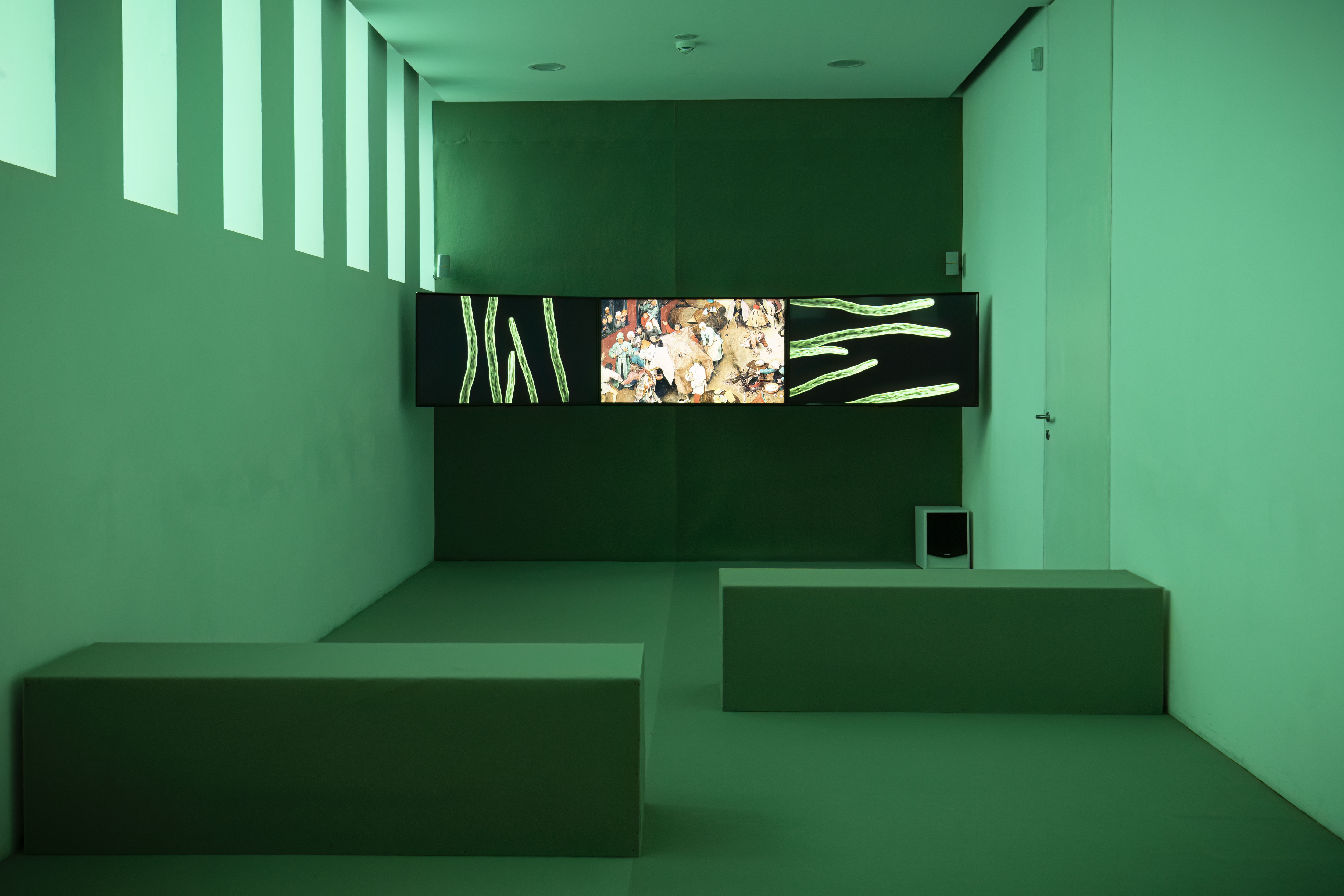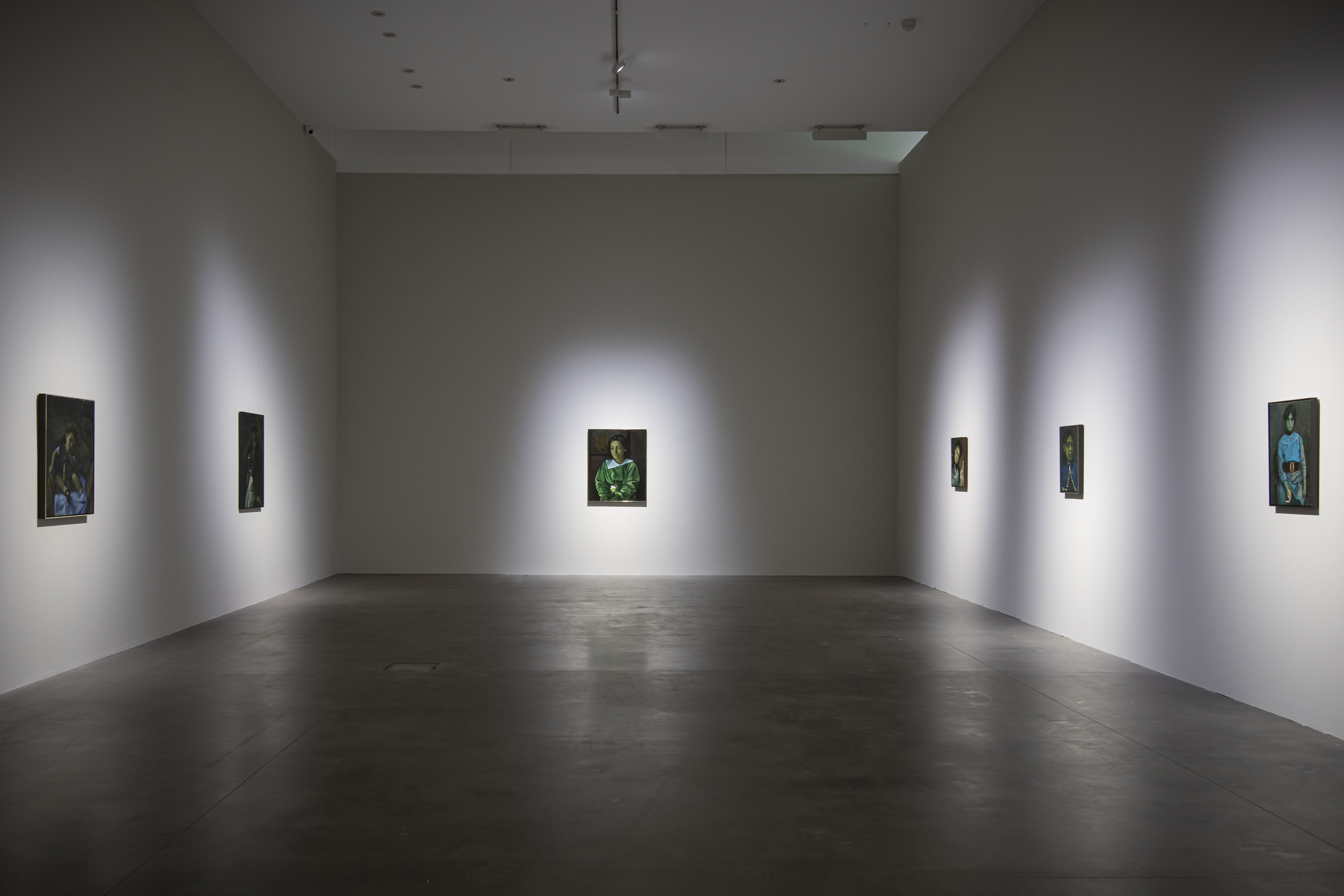Artists: Daniel Frota, Riikka Kuoppala, Tarek Lakhrissi, Ghita Skali, Thomas Teurlai, Caroline Déodat, Katja Novitskova.
On the occasion of the tenth anniversary of the partnership between Fondazione Sandretto Re Rebaudengo and ENSBA Lyon - École Nationale Supérieure des Beaux-Arts, the two institutions will open in the spaces of Palazzo Re Rebaudengo in Guarene Caroline Déodat's solo show "Landslides. Haunting is about endings that are not over" and the group show “Parallel Visions. Works from the Sandretto Re Rebaudengo Collection”. Since 2012, Fondazione and ENSBA have been collaborating in the context of the post-diplome program of the Lyon school. The program is a year-long professionalizing residency located at the school and open to five artists per edition, coordinated by a curator (Francois Piron 2012-2019; Oulimata Gueye 2020-ongoing). The post-diplome allows the participants to develop their artistic practice through meetings, lectures, workshops in Lyon, and travel abroad. Each year the curator in charge of the partnership from Fondazione (Stefano Collicelli Cagol 2012; Lorenzo Balbi 2013-2017; Bernardo Follini 2018-ongoing) has invited an artist to present her/his research in the spaces of Turin or Guarene, thus supporting the artists' first institutional presentations and accompanying them in the production processes of their work. The partnership is part of Fondazione's broader vocation to support, produce and promote emerging artistic practices. The exhibitions presented on October 8 at Palazzo Re Rebaudengo retrace some of the projects produced in the context of the collaboration, while also inaugurating a new edition of the project.
The solo show "Landslides. Haunting is about endings that are not over" by Caroline Déodat (FR, 1987) presents the video installation of the same name produced by the artist in 2020 for a circuit of festivals dedicated to the moving image and re-edited in a new version for its presentation set up in the spaces of Palazzo Re Rebaudengo. Déodat's research crosses the disciplines of cinema, fiction, ethnography and theory by exploring the relationship between archival processes and alienation. Coming from a background in anthropology and performance studies, the artist is interested in intersecting literary and corporeal knowledge to disrupt the cartographies drawn by academic disciplines through the use of subterranean histories and the employment of hauntological materials (from philosopher Jacques Derrida's concept of "hauntology," later employed by cultural critic Mark Fisher to describe a nostalgic and ghostly relationship with the past). "Landslides" is conceived from Déodat's positioning as part of the Mauritian diaspora and her phd in social anthropology at EHESS. Her dissertation Disrupting the Archives of 'Sega tipik'. Imaginary and Poetic Performativity of Mauritian Creoleness delved into the practice of Sega, a Mauritian genre combining poetry, music, and dance that originated in enslaved communities and became a tourist tradition after decolonization. Sega is looked at as a social structure employed in the process of fabricating the colonial archive through the power systems of race, gender and sexuality. The work is constructed as a poetic and cinematic essay, where the mythical territories of the Sega are combined with the intimate places of the artist's history. At the center of "Landslides" is contemporary Mauritian dancer Jean-Renat Anamah, who exhumes the specter of erased ritual and produces new collective genealogies. Déodat's work connects colonial discourses on race and their subsumption into poetic oral practices, taking an interest in the deactivation of Western methods and modes of knowledge production.
The group exhibition "Parallel Visions. Works from the Sandretto Re Rebaudengo Collection" features works produced during the editions of the partnership between the Foundation and ENSBA by the artists Riikka Kuoppala (2013 edition), Thomas Teurlai (2014 ed.), Daniel Frota (2016 ed.), Ghita Skali (2017 ed.), and Tarek Lakhrissi (2020 ed.) and that became part of the Sandretto Re Rebaudengo Collection. The title of the exhibition refers to the alternative imaginaries evoked by the works and their proposals to interrogate possible pasts and futures of the world. Through various media such as sculpture, installation, and video, the works develop parallel visions and scenarios, drawing on various genres of science fiction, from eco-fiction to cyberpunk, as terrains in which to address contemporary urgencies in the economic, social, and political spheres.
Under a burning city (2011) by Riikka Kuoppala (FI, 1980) is a video installation in which the narrative focuses on the processes by which memory is passed down between different generations. The story of the bombing in Helsinki during World War II is told by a grandmother to her granddaughter, showcasing a relationship between official and whispered truth, between lived memory and imagined memory. Europium (2014) by Thomas Teurlai (FR, 1988) is an installation consisting of assembled technological waste that takes the form of a domestic laboratory for urban mining, the practice of extracting precious metals such as gold, silver, platinum, and palladium from technological devices marked by programmed obsolescence. Inspired by a cyberpunk register, the work envisions a post-apocalyptic scenario as real. Uma jornada infinita de sonhos e descobertas (2016) by Daniel Frota (BRA, 1988) is part of the artist's research on the end of modernism and the effects that the exhaustion of a given ideology produces on our mental constructions. The work is a reproduction of the well-known displays designed with cubic concrete bases and sheets of tempered glass by the Italian-Brazilian architect Lina Bo Bardi in 1968 for the Museum of Modern Art in São Paulo, Brazil. The work evokes their dismantling for political and conservation reasons, and their remounting in 2015, developing the idea of uchronia in relation to the crisis of modern thought. Palm Attacks: a few invasive species by Ghita Skali (MA, 1992) is a showroom housed in a parallel reality for the propagandistic and ironic presentation of Phoenix Dactylifera, a common date palm that is artificially replicated as an advanced camouflage system of telecommunication apparatus. The surreal Morocco presented in the work is the privileged theatre of an engineering marathon engaged in morphological alterations, directed by policies of economic speculation. The installation This Doesn't Belong to Me (2020) by Tarek Lakhrissi (FR, 1992) consists of a cycle of five sculptures in the shape of a salamander's tail. Since medieval bestiaries, this amphibian is said to be endowed with venom and can survive in the flames of fire. The works refer to autotomy, the self-amputation of non-vital body parts practiced by some animals as a diversion against their predators, imagined Lakhrissi as an inspiration for a transhuman and utopian strategy for the self-defense of discriminated and aggressed social groups.
The DJ set/ Listening session "Sega Foutan" by Vashish Soobah will take place on the occasion of the opening on 8 October at 18:00 at the Parco d'Arte Sandretto Re Rebaudengo. Vashish Soobah is a visual artist and filmmaker born in Sicily of Mauritian parents. "Sega Foutan" was created as a dialogue with the exhibition "Landslides" by Caroline Déodat: a musical journey that traces Vashish's travel of discovery of the Diaspora. Some of the tracks presented were the soundtrack to the birthday parties of his childhood in Catania, when he danced with his parents' friends; others he discovered while walking the streets of the Mauritius capital of Port Louis with his cousins; still others by researching in his room in London, at Mauritian parties in Barona, in the car with his parents; in this case, some of the tracks come from a musical exchange with artist Caroline Déodat. 'Where do we come from? Who are we? Where are we going?" These are the questions that guide Vashish in the discovery of his origins and their sound.
